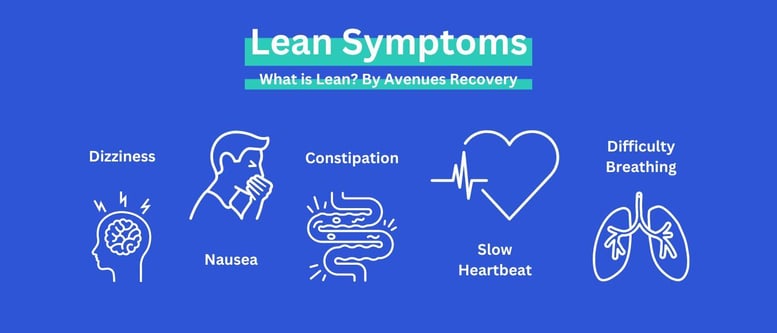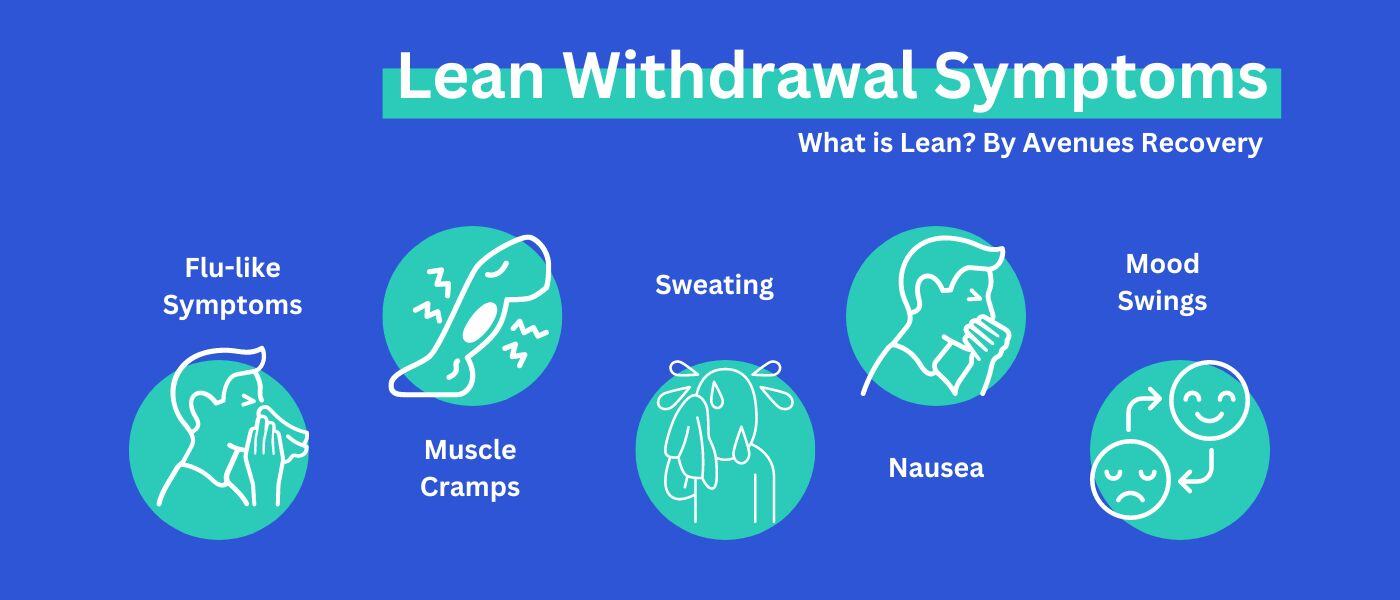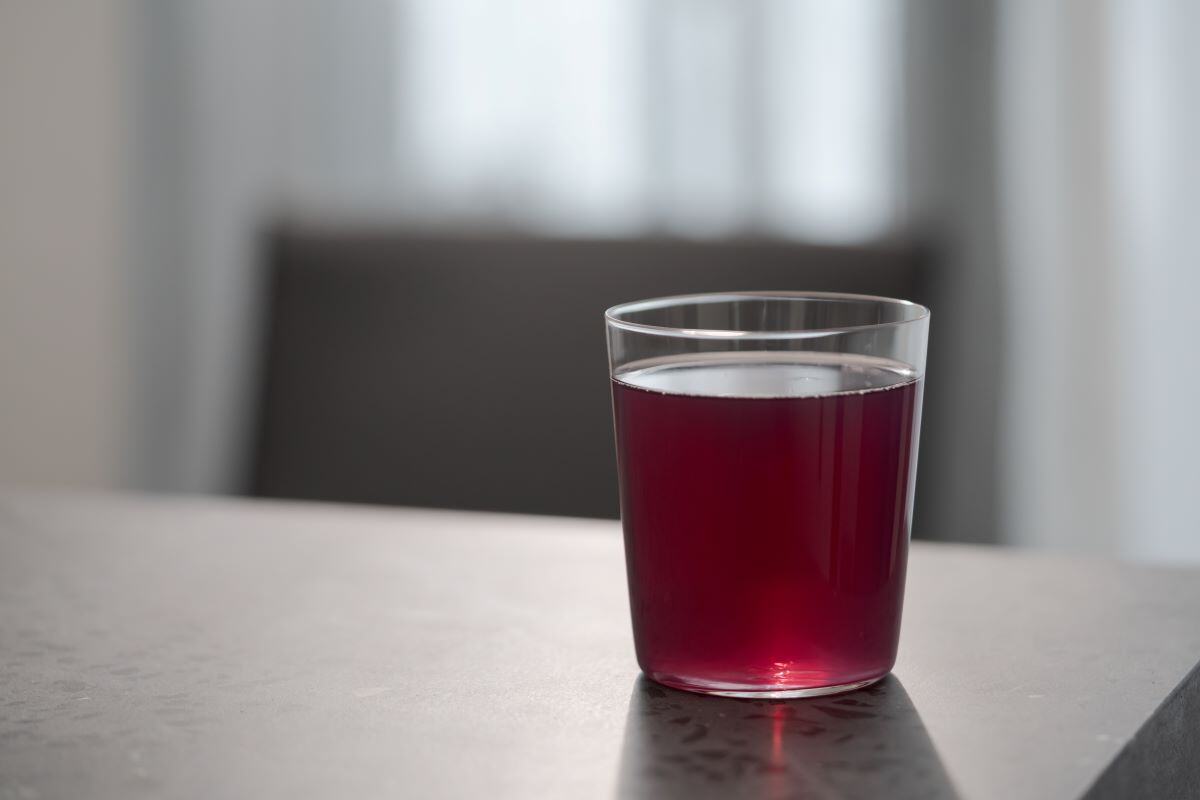Lean, also known as purple drank, is a recreational drug that has gained popularity among young adults. The lean drug was first brought to prominence by its mention in rap and hip-hop song lyrics in the southeastern United States in the early 1990s. Since then, it has remained popular within those cultural scenes. It is a dangerous and addictive concoction that combines prescription cough syrup containing codeine, soda, and sometimes candy or fruit flavors. Lean is consumed as a drink, which is why it is also referred to as a "lean drink" or a "sizzurp."
What is a lean drink? Is lean addictive? Join Avenues Recovery, top addiction treatment center, to explore in more detail what is lean. Learn to identify and treat a lean addiction.
What is In Lean and How Is It Made?
To make lean, people mix prescription cough syrup containing codeine with soda and other sweeteners such as candy or fruit flavors. Sometimes alcohol or melatonin is included. The codeine in cough syrup is a narcotic and is the main active ingredient, producing the desired effects. Codeine, a potent opioid, is a controlled substance, and its misuse can lead to serious health consequences.

Street Names for Lean
Lean is known by a few different street names, including:
- Purple drank
- Sizzurp
- Syrup
- Barre
- Purple jelly
- Texas tea
Each of these names may be determined by some of the alternative ingredients as well as the region of the country it is found in. Each variation of the lean drug has a purple color.
Reasons For Lean Use
People usually start using lean in an attempt to achieve a euphoric high, or to enhance the effects of other drugs - it's often used at parties or concerts as a recreational drug. Lean contains opioids that have a relaxing and pleasant effect on the body. Opioids are classified as depressants since they attach themselves to brain receptors responsible for slowing vital bodily functions.
Statistics of Lean Use
A recent study revealed that 15.5% of concert-goers admitted to using lean at some point in their lives, and 14% also expressed their openness to its use in the future. However, the consequences can be severe. According to recent statistics, the misuse of cough syrup and other prescription medications has been on the rise, with lean being a popular choice among young people. The glamorization of lean in music and popular culture is also a factor contributing to its popularity.
Is Lean Safe to Drink?
Lean, despite its individual ingredients being legal when prescribed by a doctor, is dangerous to consume. Codeine, one of its key components, is classified as a Schedule II drug due to its high potential for abuse and addiction. It should only be used for legitimate medical purposes, like managing mild pain or treating a deep cough.
It's important to be aware that lean carries a significant risk of side effects and negative consequences despite any glamorization in popular culture. Tragically, there have been instances of prominent musical artists who have lost their lives due to overdoses involving this drug concoction.
Lean Effects
Normally, the impact of drinking lean starts to manifest within 30 to 45 minutes, although higher levels of codeine (some people exceed the recommended dose by up to 25 times) can accelerate the onset. The peak occurs roughly 1 to 2 hours after consumption and lasts approximately 4 to 6 hours.
Although lean has ingredients found in prescribed medications (cough syrup, antihistamines), it is still highly unsafe, and people who use it over a long period or in large amounts can face serious and even fatal effects from the drug. Another potential danger lies in the fact that lean is commonly mixed with alcohol, making the risk of overdose and side effects that much stronger.
What Does Lean Do to You?
What does lean do to your body? Common symptoms of regular lean (purple drank) use include:
- Feeling different or not fully aware of one's surroundings
- Feeling tired, sad, and having trouble thinking clearly
- Making poor decisions
- Constipation
- Drowsiness
- Dizziness
- Blurred vision
- Nausea
- Confusion
- Slow heartbeat
- Difficulty breathing
- Losing consciousness

Addiction and Overdose Potential of Lean
Is lean addictive? The answer is that despite its reputation as a harmless recreational drug, lean is highly addictive. This means that the body gets used to having the drug in its system and needs a steady infusion to function normally. Similarly to other opioids, the body also develops a tolerance, which means that increasingly higher doses of lean are required to achieve the same effects as before.
Additionally, ingredients commonly used in lean, such as cough syrup, Promethazine, and alcohol, are readily available without a prescription and socially acceptable for most adults. This accessibility makes it challenging to identify lean addiction, as these substances are not only commonly found in households but also legal for purchase.
Misusing lean increases the risk of fatal overdose. Overdosing on lean can cause severe respiratory depression, loss of consciousness, and, in some cases, death. It is crucial for individuals using the lean drug and their loved ones to understand the potential dangers and seek help promptly.
Lean Withdrawal
If someone becomes dependent on Lean, they may experience withdrawal symptoms when they stop using it, such as:
- Flu-like symptoms
- Sweating
- Feeling nauseous
- Muscle cramps
- Mood swings
- Anxiety
- Agitation

Treatment for Lean Addiction
Recovering from lean addiction can be tough, but there are ways to get help. Some people don't realize how harmful lean can be until it's too late. Seeing celebrities use lean may make it seem cool, but it's actually dangerous.
Treatment options for Lean addiction include:
- Medical Detoxification: Safely managing withdrawal symptoms is crucial. Medical professionals can monitor and provide necessary medications to ease the detox process.
- Inpatient Rehabilitation: Residential treatment programs offer intensive care in a controlled environment, with structured therapy sessions, counseling, and support from staff and peers.
- Outpatient Rehabilitation: These programs allow individuals to live at home while attending scheduled therapy sessions, offering flexibility for those with responsibilities.
- Behavioral Therapy: Cognitive-behavioral therapy (CBT), Dialectical-behavioral therapy (DBT), and contingency management are often effective in addressing the psychological aspects of addiction and helping individuals develop healthier coping mechanisms.
- Support Groups: Participating in support groups like Narcotics Anonymous (NA) can provide a critical sense of community and peer support during recovery.
- Individual Counseling: One-on-one therapy sessions with addiction specialists can help identify underlying issues and develop personalized strategies for recovery.
- Medication-Assisted Treatment (MAT): In some cases, medications like buprenorphine or naltrexone may be prescribed to manage cravings and reduce the risk of relapse.
- Family Therapy: Involving family members in therapy can help repair relationships, educate loved ones about addiction, and create a supportive home environment.
- Holistic Therapies: Complementary approaches such as mindfulness, yoga, music, and art therapy can all enhance overall well-being and stress management.
- Aftercare Planning: Developing a long-term recovery plan is crucial to maintaining sobriety. This may include ongoing therapy, support group attendance, and relapse prevention strategies.
- Education and Awareness: Learning about the risks and consequences of Lean abuse is essential for individuals and their families to make informed decisions and support recovery efforts.
What is Lean Addiction and How to Get Help
Now that you understand what lean is, remember that although it may be tempting, the hidden dangers and potentially devastating consequences should not be underestimated. This concoction, born from a blend of readily available ingredients, can quickly spiral into a perilous addiction with severe health and legal ramifications. It's essential to recognize that lean is not just a recreational drink; it is a potent and risky mixture that demands our attention and vigilance.
Education, awareness, and seeking professional help are all crucial steps in combating lean addiction and steering individuals toward healthier choices and brighter, addiction-free futures. Remember that life's highs are far more rewarding when they are achieved through natural, safe, and fulfilling means!
If you or a loved one is struggling with addiction, Avenues Recovery Centers provides a lifeline to hope and healing. Our supportive and dedicated team of addiction professionals has helped thousands reach sobriety, and they can help you too! Contact Avenues Recovery today to hear about our personalized treatment plans that will enable you to break free of your addiction, and live the life you deserve. Let our highly successful team support you on the journey to a brighter, addiction-free future.



